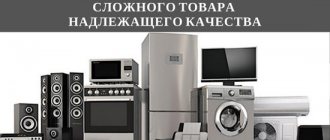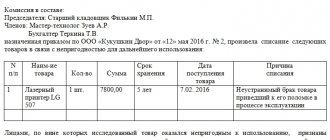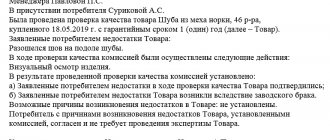Product quality indicators are a quantitative characteristic of the product properties that make up its quality. In the last article we tried to define product quality. We have determined that product quality is determined primarily by the consumer of this product or service. And all kinds of standards and other regulatory documents only record the needs and desires of the consumer. But both the business producing products or services and the consumer face a problem: how to evaluate quality, how to express the quality of products or services in natural units of measurement.
The meaning and classification of product quality indicators.
Therefore, every manufacturer of products or services is faced with the task of expressing quality in quantitative units. indicators are a quantitative characteristic of the product properties that make up its quality.
Product quality indicators are classified into groups. I will list only some groups of quality indicators:
- destination indicators; determine the beneficial effect of the functional use of products (for example, productivity);
— reliability indicators; determine product reliability;
— ergonomic indicators; determine the degree of ease of use of products by the consumer;
— aesthetic indicators; determine combinations of composition, style of color solutions, harmonious appearance of products;
— patent and legal indicators; characterize the patent purity of the product and the degree of its patent protection;
— environmental indicators; determine the degree of impact of products on the environment during their operation;
— safety indicators; determine the degree of safety of the product during its operation and storage;
- transportability indicators; determine the possibility of transporting the product by various modes of transport without compromising its properties (quality of product packaging).
The set of quality indicators will determine the quality of the product or service. I would like to note that not all groups of indicators should be used to assess the quality of every product. It all depends on the complexity of the product, its purpose and the wishes of the manufacturer.
We will not dwell on the characteristics of each group. In my opinion, this is simply not necessary in a small business. But it is simply necessary to dwell on some groups of indicators in more detail, because Failure of products to comply with these indicators is simply disastrous both for the product and for the entire small business.
Methods for determining quality
The accepted concept of product quality is the common characteristics of products sold in retail outlets, by which one can determine their compliance with customer demand. According to marketing specialists, quality includes a lot of requirements in relation to the above-mentioned characteristics. To recognize a product as high quality, it is necessary to compare its properties with the requirements of regulatory documents, as well as, in some cases, with the expectations of customers.
Product quality indicators. Groups of indicators.
Let's focus first of all on environmental indicators. You should pay maximum attention to environmental issues and the safety of your products. In all countries, these issues are strictly regulated by regulatory documentation. And, if the parameters of your product do not comply with environmental standards, very strict sanctions await you. I knew many small businesses that closed precisely because of non-compliance with environmental requirements. These requirements apply to both the business itself and the products it produces.
The next group is safety indicators. Failure to comply with these indicators can lead not only to the closure of the business, but also to criminal liability for its owner. Well, monetary compensation for consumers injured by dangerous products has ruined more than one business.
Well, all other indicators of product quality will be assessed by the market. The consumer is the best judge of product quality. You can think about quality for a very long time, but this is not our task. I would like to look at just some more indicators of product quality, which, in my opinion, are very important for the consumer and, accordingly, for the manufacturer.
I think you already understand that these are reliability indicators. I deliberately did not define this group in the list of indicator groups, because I believe that this group of indicators needs to be examined in more detail.
So, reliability indicators determine the properties of a product to maintain all specified functions and parameters during the specified period of its operation . In turn, reliability, as a rule, consists of several indicators. Let's not consider everything. Let's focus only on the most important for most products or services:
— durability (service life) of the product;
- guarantee period;
- reliability of the product; expresses the ability of a product to continuously maintain performance and specified parameters for a certain time; for some types of products it is a very important indicator;
- maintainability of the product; expresses the suitability of the product for repairs and maintenance.
Quality control
The quality of manufactured goods is assessed in many ways, based on the requirements of standards and consumer needs. There are various assessment methods, both objective. and subjective.
Objective methods include:
- Measuring. This is a check of geometric characteristics using measuring instruments: rulers, calipers, thickness gauges, flaw detectors and other instruments and improvised means. Based on the measurements taken, density, mass, shape are determined, and operational properties are established. The results obtained must be reflected in the technical characteristics of the product and expressed in units of the international SI system.
- Registration. A method associated with a sequence of actions, their calculations and recording. As a practical application of the method, we can give an example of recording failures in the operation of a technical device. Using this method, you can not only reliably assess the quality of manufactured products, but also use it at all stages of the technological process in the manufacture of assembly units or processing of individual elements.
- Mathematical. They are used in conjunction with measuring and recording methods. Their essence lies in the presentation of quality assessment results limited by the framework of rational modeling. That is, to determine the correspondence of parameters, a certain template installed in a computer program is used.
- Trial operation. A method used to study the practical functioning of manufactured products, for example, when measuring technical parameters of noise, vibration or electricity consumption. Such studies also determine: the degree of wear, the period for which warranties are issued, and the limits of operational characteristics. This method is acceptable for determining the quality of non-food products.
Subjective or heuristic methods.
- Method of interpretation of readings. For example, several indicators are taken at different times and other indicators are calculated at any point in time space. This method is easy to apply in mathematical modeling, but these indicators will largely depend on subjective opinion. One example could be an organoleptic method for determining quality indicators or evaluating a product by taste, color, smell and other external factors. This method determines the quality of not only food products, but also some indicators characteristic of complex technical devices. For example, this applies to cell phone models in determining the brightness of the display and the sensitivity of the buttons.
- Expert method. Only highly qualified specialists with acquired skills and experience are involved in using this method.
- Sociological. A method that combines objective and subjective approaches. It contains two components at the same time: information based on consumer surveys and results based on conducted research. For example, whether the quality of a manufactured product matches its actual value. An objective assessment of product quality requires the use of standard measurements, including deviation standards, while a subjective assessment uses characteristics identified by individuals, for example, discrepancies in shape and color.
- According to Russian standards of merchandising, there is a widely used methodology according to which consumer goods are assessed with points. Despite its conventionality, it is easy to use. The quality indicators of products are established through the senses (hearing, vision, taste and smell). These properties are assessed on a 14-point scale, and in some cases the range used increases from 20 to 1000 points. The essence of this method is to determine conditional indicators and classify products. Revealing low scores does not affect the overall picture of quality; the product is still in good condition. But using this method it is not difficult to sort goods by appearance, design and packaging.
The greater the variety of methods used to assess quality, the more informative this indicator is for the consumer.
Durability of products.
The first indicator is the service life (or durability) of the product. Durability is the ability of a product to maintain performance and stability of parameters until it is destroyed or cannot be restored to function.
This indicator is provided by the manufacturer when the consumer follows the rules for operating the product, regulated by the manufacturer and prescribed in the accompanying documents. For example, when purchasing an electric light bulb, you will be interested in its parameters and service life.
This indicator is especially important for components used in further production. It makes no sense to calculate this indicator in a small business, but it is necessary to remember it and, if necessary, use it. For example, a hairdresser, having done a lady's hair, tells her: if you don't get caught in the rain and don't sleep lying down, then the hairstyle will last for several days.
Well, seriously, you, knowing that you use better materials and technologies in production than your competitors, can claim that the service life of your product is such and such and, most importantly, that it is higher than that of your competitors. This can also justify a higher price than competitors. It is clear to everyone that the service life of dry wood products is longer than that of undried wood. But the consumer is not interested in the raw materials, but in the final result, i.e. what he gains. And you tell him that the service life of your product is “N” years and it is higher than that of your competitor. At the same time, you are confident that, subject to the operating conditions you have established, the service life of the product will indeed be no less than that established by you.
Definition of concepts
When defining the meaning of the word “quality”, one cannot ignore the concept of “products”; they are directly related to each other. In simple terms, products are everything that an enterprise produces, if we are talking about production, as well as work performed to order or services provided.
Product types:
- gross output;
- commercial products;
- finished products;
- sold products.
So what is quality? The definition of the term according to economic theory or political economy is denoted as the utility of a product (good, service) or consumer utility. But in this case, it turns out that some of the items have no quality or are useless from the point of view of consumer preferences. As an example, we can cite medications that do not help all consumers in a row, which means that for some people they are not useful and, therefore, of poor quality. But this is a false conclusion. The concept of quality lies in the plane of the inherent properties of products that satisfy needs.
In other words, the question of what product quality is can be answered this way: it is the sum of the properties, qualities, and characteristics of goods produced to satisfy existing needs. Product specifications and properties may vary depending on demand.

Warranty period, warranty obligations.
The second indicator is the warranty period. It determines the period for which the manufacturer guarantees the safety of the properties and parameters of the product and undertakes to restore these properties free of charge if they change or are violated, if the consumer complies with the operating conditions of this product. This period is called the warranty period. And the higher it is, the consumer considers the product to be of higher quality.
Naturally, this indicator is not important for all products, and for some it is not taken into account at all. As an example, I will give an ordinary nail. Who would think to run to the seller in the store and demand its replacement if it bent when you hammered it in? Well, it’s completely impossible to prove that you scored it correctly.
But for many products, this criterion is the dominant one for the consumer when choosing the products or services he needs. For example, for furniture, electrical appliances, consumer electronics, a whole range of repair work, etc. Many people prefer to have their car repaired only in workshops that document the quality of the repair, although, as a rule, this is more expensive than repairing it from a private owner. So I advise you to pay special attention to this indicator.
According to some sources, many products are not sold at all if the manufacturer does not provide them with a warranty. We will not dwell in detail on the methods for determining this indicator. For simple products these techniques are quite simple. And, if you back your products with a written warranty that matches or exceeds your competitors' warranties, you will raise the profile of your small business. In this case, you may incur some material losses associated with the preparation and approval of the necessary documentation. But they will more than pay for themselves by increasing sales of your products. I just want to note two points related to the warranty period.
Ensuring that your warranty obligations are met can be very difficult, especially if your products are sold in several regions remote from the place of production. It is necessary to organize free repairs in remote places, which is very expensive.
One warranty repair for your product may exceed the profit you make from selling several of these products. So the level of quality and reliability of your products should be one of your highest priorities.
The consumer’s right to proper quality of goods, works and services
Both the Law on the Protection of Consumer Rights and the Civil Code of the Russian Federation do not define the category “quality of goods, works and services”. However, based on the analysis of other legal acts, the quality of goods, works and services can be determined as follows.
The quality of goods (work, services) is a set of certain consumer properties of a product (work, service), corresponding to the reasonable and sufficient needs of the buyer (customer), and excluding harm to the buyer (customer) and the environment during their proper operation, storage, transportation and consumption.
From a legal point of view, quality can be appropriate or inadequate:
- Proper quality of a product (work, service) means such a state of the product, the result of the work, the process of performing the work and providing the service, when all the specified requirements are met (or are being fulfilled) and as a result of this the product (work, service) can be used for its intended purpose, and therefore , be useful to the consumer. In addition, such quality simultaneously implies that the product, work and service are safe. Although not every safe product is of high quality.
- Inadequate quality of a product (work, service) means that the above requirements are not fully met or only partially met. Inadequate quality is expressed in the presence of certain deficiencies.
The Law on the Protection of Consumer Rights specifies two types of defects in goods (works, services):
- Disadvantage - non-compliance of a product (work, service) or with the mandatory requirements provided for by law or in the manner established by it, or with the terms of the contract (in their absence or incomplete conditions - usually the requirements), or the purposes for which the product (work, service) of this kind usually used, or for the purposes of which the seller (performer) was informed by the consumer when concluding the contract, or by sample and (or) description when selling goods according to the sample and (or) description;
- A significant deficiency is an irreparable deficiency or deficiency that cannot be eliminated without disproportionate costs or time, or is detected repeatedly, or appears again after its elimination, or other similar deficiencies.
An explanation on the issue of a significant shortage of goods (work, services) and a shortage of technically complex goods was given by the Plenum of the Supreme Court of the Russian Federation in its Resolution No. 17 dated June 28, 2012 “On the consideration by courts of civil cases in disputes regarding the protection of consumer rights.”
A significant defect in a product (work, service), the occurrence of which entails legal consequences provided for by the Law on the Protection of Consumer Rights, should be understood as follows:
- fatal defect of a product (work, service) - a defect that cannot be eliminated by taking measures to eliminate it in order to bring the product (work, service) into compliance with the mandatory requirements provided for by law or in the manner established by it, or the terms of the contract (if their absence or incompleteness of conditions - usually the requirements), leading to the impossibility or inadmissibility of using this product (work, service) for the purposes for which a product (work, service) of this kind is usually used, or for the purposes of which the seller (performer) was notified by the consumer when concluding a contract, or with a sample and (or) description when selling goods according to the sample and (or) description;
- a defect in a product (work, service) that cannot be eliminated without disproportionate costs - a defect, the costs of eliminating which are close to the cost or exceed the cost of the product (work, service) itself or the benefit that could be received by the consumer from its use;
- a defect in a product (work, service) that cannot be eliminated without a disproportionate amount of time - a defect, the elimination of which takes time exceeding the period established by agreement of the parties in writing and limited to forty-five days for eliminating the defect in the product, and if such a period is agreed upon by the parties not defined - a time exceeding the minimum period objectively necessary to eliminate this deficiency using the usually used method;
- defect of a product (work, service) identified more than once - various defects of the entire product, identified more than once, each of which individually makes the product (work, service) not comply with the mandatory requirements provided for by law or in the manner established by it, or the terms of the contract (in their absence or incompleteness of the conditions - usually the requirements) and leads to the impossibility or inadmissibility of using this product (work, service) for the purposes for which a product (work, service) of this kind is usually used, or for the purposes about which the seller ( the contractor) was informed by the consumer when concluding the contract, or the sample and (or) description when selling goods according to the sample and (or) description;
- a defect that reappears after it has been eliminated is a defect in a product that reappears after measures have been taken to eliminate it.
In relation to a technically complex product, a defect in the product should be understood as various defects of the product, the elimination of which together takes time, leading to the impossibility of using the product (work, service) for more than 30 days during each year of the warranty period.
In practice, there are common cases when a defect in a product or work appears only after some time of use or is not noticeable upon receipt of the product or work result. Thus, another classification of product (work) defects is of no small importance:
- An obvious defect is one that can be detected at the time of receipt of the goods, the result of work, for example, during inspection of the goods;
- A latent defect is one that became obvious during a period of use or the detection of which at the time of receipt required special knowledge or specific acceptance methods.
It should be noted that the legislator in Art. 14 of the Law on Protection of Consumer Rights and Art. 1095 of the Civil Code of the Russian Federation also indicates the following types of shortcomings:
- constructive;
- production;
- prescription;
- other shortcomings.
A design flaw is a flaw in a design solution that occurred before the product was manufactured, at the stage of its development, design, construction, etc.
A manufacturing defect is a defect that arises as a result of a manufacturer’s violation of the design and (or) technological documentation for the manufacture of goods. That is, a production defect, in contrast to a design defect, arises already at the stage of manufacturing the product.
A prescription deficiency is a deficiency of food and pharmaceutical substances (goods), as well as the results of work on the production and manufacture of these substances, expressed in violation of the mandatory requirements imposed by law on the chemical composition of these substances, as well as in violation of the technology for their production. Prescription deficiency can manifest itself in the following forms:
- violation of the mandatory requirements for chemical composition in the manufacture of food and pharmaceutical substances;
- use of low-quality ingredients in the production of food and pharmaceutical substances;
- issuance by a doctor of a prescription to a patient indicating medications that do not cure the patient’s disease, the use of which has caused harm to the life and health of the latter.
Other disadvantages of the product include:
- Technological deficiencies are a violation of the chemical composition of other (besides food and pharmaceutical) substances (goods), the production of which is carried out on the basis of approved technology, and not a recipe.
- Mixed deficiencies are a combination of several deficiencies.
- Information deficiencies – provision of incomplete and (or) unreliable information about the product.
Controls
Regardless of who evaluates product quality, different means may be used to obtain the necessary information. Both external and internal controllers can use one or several methods at once. The main such means are:
- Measurement. Using special equipment, the chemical composition and main operational characteristics of the product are determined. After this, the obtained exact values are compared with the established baseline indicators. For example, this could be measuring weight. It is determined using equipment with a given level of accuracy. Then the obtained value is compared with the information specified in the relevant documentation.
- Registration. It involves recording certain characteristics of the product.
- Application of the sample. Comparison of finished product indicators with the base sample.
- Visual. The inspector evaluates the appearance of the product. He carefully examines the actual sample for relevant defects.
- Organoleptic. It is a set of methods that involve the use of human senses in the process of determining the qualities of a product.
Each of the presented methods may include several different ways to obtain the necessary information. The choice of one method or another must correspond to the characteristics of the object under study.
Indexes
To assess the qualities of a set of types of heterogeneous products, the quality and defect index is used.
The quality index (QI) is a complex indicator of the quality of heterogeneous products (produced over the period of time under consideration), which is equal to the weighted average of the relative values of the quality indicators of these products.
The defectiveness index (ID) is a comprehensive indicator of the quality of heterogeneous products produced during the period under review, equal to the weighted average of the defectiveness coefficients of these products (the defectiveness coefficient is the weighted average number of defects per unit of product).
Quality and defectiveness indices are a universal indicator that can be used to assess the quality of an enterprise’s products as a whole and analyze its changes over a number of years.
Summarizing the considered aspect of product quality, GOST 15467-79 gives it the following definition: “Product quality” is a set of product properties that determine its suitability to meet certain needs in accordance with its purpose.”







